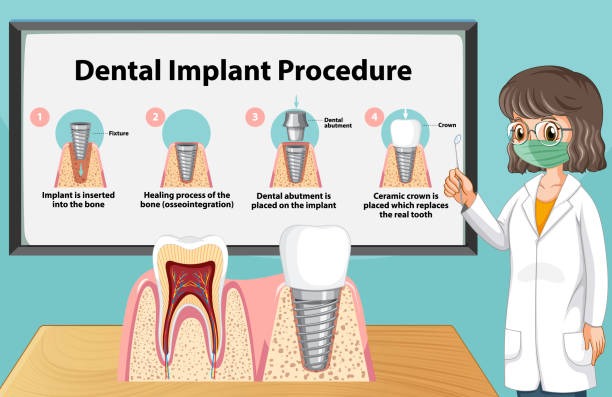Table of Contents:
- Key Points to Know Before Starting
- Initial Consultation and Examination
- Planning and Preliminary Procedures
- Placing the Dental Implant
- Osseointegration and Healing
- Attaching the Abutment and Crown
- Aftercare and Long-Term Maintenance
- Final Thoughts
Key Points to Know Before Starting
Dental implants can be life-changing for anyone missing one or more teeth. They offer a stable, long-term solution that looks and feels like natural teeth. For people exploring options, choosing a reliable family dentist in Lewis Center, Ohio, or a reputable provider is essential for a comfortable and successful experience. Implants require careful planning, patience during the healing process, and a commitment to oral hygiene, but the benefits often extend well beyond aesthetics, supporting overall dental health and confidence.
Initial Consultation and Examination
The first step is a detailed consultation with a dental professional. Comprehensive X-rays and 3D images may produce a clear picture of bone density and structure. During this stage, the dentist evaluates medical history, assesses for any risk factors, and determines eligibility for implants. This thorough assessment guides the treatment plan, ensuring it’s customized for the patient’s unique needs. Open communication is encouraged so concerns and expectations can be addressed early.
Planning and Preliminary Procedures
After the planning is complete, preliminary procedures may be necessary to prepare for implant placement. When there is insufficient bone, a bone transplant or sinus lift may be necessary. This step helps guarantee a strong foundation for the implant. Gum health is also prioritized, as healthy gums reduce the risk of complications. According to the American Dental Association, the success of dental implants is closely tied to these careful preparations before the main procedure.
Placing the Dental Implant
Placement of the implant post is a minor surgical procedure usually performed in the office. Local anesthesia minimizes discomfort, and some practices offer sedation for added relaxation. The dentist inserts a small titanium post into the jawbone, which serves as the new tooth root. Patients often report that recovery is easier than expected, with most returning to daily activities within a day or two. Great care is taken at this stage to ensure proper placement and stability.
Osseointegration and Healing
After the implant post is positioned, a healing period called osseointegration follows. During this phase, which can take several weeks to a few months, the jawbone fuses naturally with the titanium post. This process is key to the implant’s long-term security and reliability. Patients may wear a temporary crown, and regular check-ins are scheduled to monitor healing. Guidance from dental experts such as North Orange Family Dentistry helps optimize recovery and ensure patient comfort as the bone and implant bond together. Proper care during this time—including good oral hygiene and avoiding pressure on the implant site—can significantly influence the success of the final restoration.
Attaching the Abutment and Crown
Once osseointegration is confirmed, the dentist attaches an abutment to the healed implant. The abutment acts as the connector for the final restoration—the crown—which is crafted to match the color and shape of the surrounding teeth. The result is a natural-looking and fully functional replacement tooth. This two-part approach, separating the surgical implant from the visible crown, is what gives dental implants their reputation for authenticity and durability.
Aftercare and Long-Term Maintenance
Maintaining dental implants is similar to caring for natural teeth. Brushing twice daily, flossing, and scheduling routine dental cleanings are vital for protecting the surrounding gums and supporting structures. Avoiding hard foods immediately after surgery and following the dentist’s instructions promote smooth healing.
Final Thoughts
Dental implants restore more than smiles—they can enhance self-confidence and quality of life. By following each step, understanding the process, and keeping up with regular dental visits, most people find implants to be a rewarding and lasting solution. As implant technology advances, more patients benefit from long-term comfort, function, and aesthetics.



